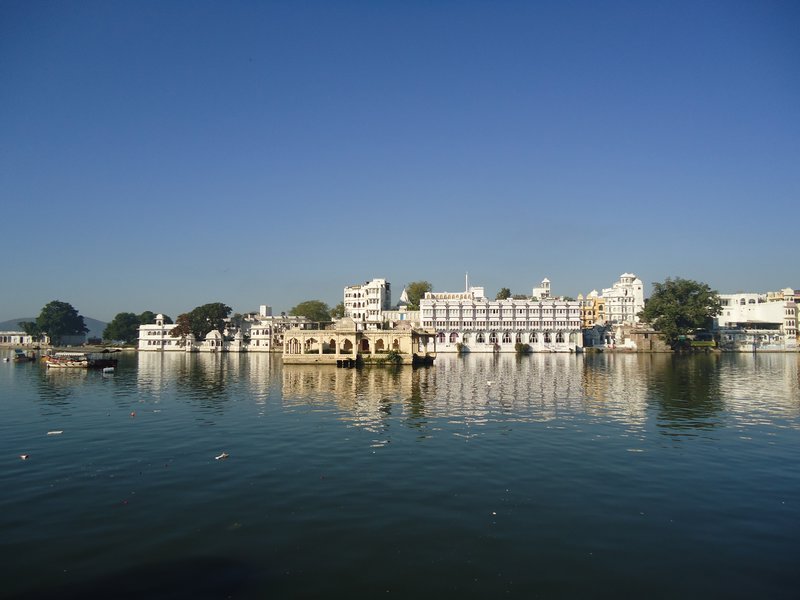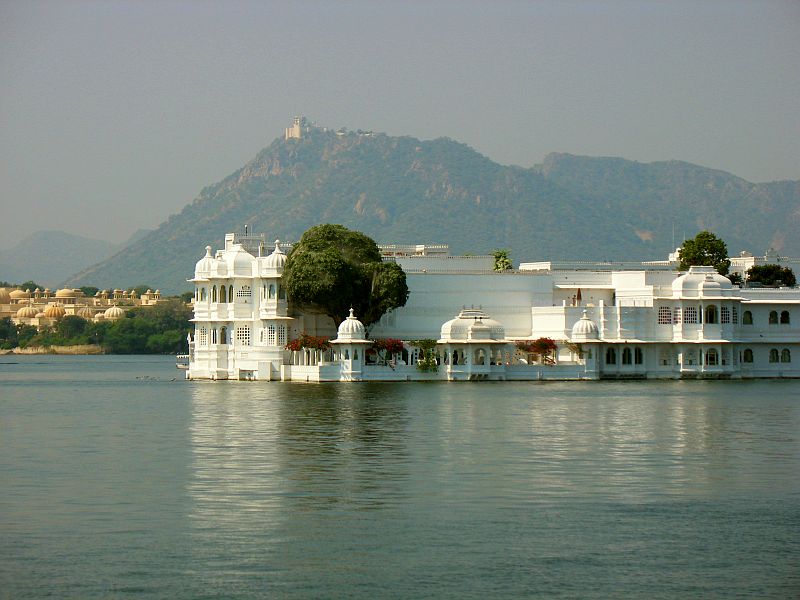About
Maharana Kumbha was the eldest son of Rana Mokal by his Parmar Queen, Sobhagya Devi, daughter of Jaitmal Sankhla, and thus united in himself the fine qualities of these two royal races of India, the culture of one and the chivalry of the other. Maharana Kumbha ascended the throne of Mewar in A.D. 1433 in the renowned fortress of Chittor, and ruled till A.D. 1488, a period of nearly 35 years, which was one of the most prosperous and important in the history of Mewar.
Rana Kumbha-Maharana Kumbhakarna, was the ruler of Mewar, a state in western India, between AD 1433 and 1468. He was a Rajput belonging to the Sisodia clan. Kumbha was a son of Rana Mokal of Mewar by his wife Sobhagya Devi, a daughter of Jaitmal Sankhla, the Parmara fief-holder of Runkot in the state of Marwar. Rana Kumbha was the vanguard of the fifteenth century Rajput resurgence.
The capture of Nagor in A.D. 1435 by Maharana Kumbha brought Sultan Qutbud-din of Gujarat into the field against him. With the Sultan of Malwa, the Maharana had come into collision in the early part of his reign. These two kingdoms, the most powerful Mussalman principalities in India at the time were defeated singly by the Maharana. These two Mohammedan kingdoms combined and simultaneously invaded Mewar from the west and the south; but Kumbha, supported by the chivalry of Mewar and inspired by the patriotic valour of the Guhilot Rajputs, vanquished them both. Maharana Kumbha repeatedly defeated sultans of Malwa and Gujarat and built 32 forts in Rajasthan. Even the combined armies of sultans of Malwa and Gujarat could not beat Kumbha. To commemorate his victory over these Muslim rulers, Maharana Kumbha built the victory tower in 1440 A.D
After being overrun by the armies of Alauddin Khilji at the turn of the 13th century, Mewar had become relatively insignificant. Rana Hammira is credited with casting off the Muslim yoke and establishing the second Guhila dynasty of Chittor in 1335. The title Rana and later Maharana was used by rulers of this dynasty. Rana Hammira's grandson, Maharana Mokal was assassinated by his brothers (Chacha and Mera) in 1433. Lack of support, however, caused Chacha and Mera to flee and Rana Kumbha ascended the throne of Mewar. Initially, Rana Kumbha was ably assisted by Ranmal (Ranamalla) Rathore of Mandore. With the passing of time, however, Rana Kumbha wearied of Ranmal's hold on power and in 1438, had him assassinated. In November 1442, Mahmud Khalji (Khilji), Sultan of Malwa, commenced a series of attacks on Mewar. After capturing Machhindargarh, Pangarh and Chaumuha, the Sultan camped for the rainy season. On April 26, 1443, Rana Kumbha attacked the Sultan's encampment, following an indecisive battle the Sultan returned to Mandu. The Sultan attacked again in November 1443, capturing Gagraun and adjoining forts but the capture of Chittor eluded him. The next attack was on Mandalgarh (in October 1446) and was also unsuccessful. Perhaps bloodied by these engagements, the Sultan did not attack Mewar for another ten years. In order to commemorate his resounding victory over the combined armies of Malwa and Gujarat in 1440 AD, Rana Kumbha got the famed 37 meter, 9 storey high 'Vijay Sthambha' erected at Chittorgarh which was completed in 1448 AD.
From Udaipur: Kumbhalgarh sanctuary is located on Udaipur - Ranakpur highway. Ranakpur is one of Jain religions 'teerth' and even if you do not follow Jainism, its a temple worth a visit. You will be pleasantly amazed looking at the sculpting, carving with magnificent details on white marble. These carvings cover every inch of the temple, from pillars, to walls to corridors to ceiling. When you start from Udaipur, you want to drive to North -West of Udaipur to get to Kumbhalgarh. If you are staying in city then major landmarks you would pass through are chetak circle, sukhadia circle and fatehpura. You want to drive towards a place called 'iswal'. Iswal is about 11 kms from Udaipur. On Iswal make a right turn toward Kumbhalgarh sanctuary. Follow the directions on the road. Please do note, road is not good all the way and be careful of stray buffalos, cattle and other domestic foul on the road. In my experience, never once these animals heed to your vehicle horn so do not count on honking in the hope animals will give you way, you would definitely want to slow down and given them way or run a risk of running your vehicle in them which may not only ruin the fun of the trip but also attract some crowd from nearby villages harassing you for your careless driving, you may also be asked to provide 'compensation' the the cattle owner. Hey, don't forget to take a stop at so many en route sugar cane fields and munch on them, IT IS FUN!! Once you are in Kumbhalgarh, do not forget to visit Parshuram temple which is another 30 minutes drive from Kumbhalgarh fort, its a true test of your leg muscles, a small cave in which temple is located is serene, you may want to close your eyes and imagine how this place would have been thousands of years ago when Parshuram used to meditate in that place!
Kumbhalgarh Photo Gallery
Maharana Kumbha was the eldest son of Rana Mokal by his Parmar Queen, Sobhagya Devi, daughter of Jaitmal Sankhla, and thus united in himself the fine qualities of these two royal races of India, the culture of one and the chivalry of the other. Maharana Kumbha ascended the throne of Mewar in A.D. 1433 in the renowned fortress of Chittor, and ruled till A.D. 1488, a period of nearly 35 years, which was one of the most prosperous and important in the history of Mewar.
Rana Kumbha-Maharana Kumbhakarna, was the ruler of Mewar, a state in western India, between AD 1433 and 1468. He was a Rajput belonging to the Sisodia clan. Kumbha was a son of Rana Mokal of Mewar by his wife Sobhagya Devi, a daughter of Jaitmal Sankhla, the Parmara fief-holder of Runkot in the state of Marwar. Rana Kumbha was the vanguard of the fifteenth century Rajput resurgence.
The capture of Nagor in A.D. 1435 by Maharana Kumbha brought Sultan Qutbud-din of Gujarat into the field against him. With the Sultan of Malwa, the Maharana had come into collision in the early part of his reign. These two kingdoms, the most powerful Mussalman principalities in India at the time were defeated singly by the Maharana. These two Mohammedan kingdoms combined and simultaneously invaded Mewar from the west and the south; but Kumbha, supported by the chivalry of Mewar and inspired by the patriotic valour of the Guhilot Rajputs, vanquished them both. Maharana Kumbha repeatedly defeated sultans of Malwa and Gujarat and built 32 forts in Rajasthan. Even the combined armies of sultans of Malwa and Gujarat could not beat Kumbha. To commemorate his victory over these Muslim rulers, Maharana Kumbha built the victory tower in 1440 A.D
After being overrun by the armies of Alauddin Khilji at the turn of the 13th century, Mewar had become relatively insignificant. Rana Hammira is credited with casting off the Muslim yoke and establishing the second Guhila dynasty of Chittor in 1335. The title Rana and later Maharana was used by rulers of this dynasty. Rana Hammira's grandson, Maharana Mokal was assassinated by his brothers (Chacha and Mera) in 1433. Lack of support, however, caused Chacha and Mera to flee and Rana Kumbha ascended the throne of Mewar. Initially, Rana Kumbha was ably assisted by Ranmal (Ranamalla) Rathore of Mandore. With the passing of time, however, Rana Kumbha wearied of Ranmal's hold on power and in 1438, had him assassinated. In November 1442, Mahmud Khalji (Khilji), Sultan of Malwa, commenced a series of attacks on Mewar. After capturing Machhindargarh, Pangarh and Chaumuha, the Sultan camped for the rainy season. On April 26, 1443, Rana Kumbha attacked the Sultan's encampment, following an indecisive battle the Sultan returned to Mandu. The Sultan attacked again in November 1443, capturing Gagraun and adjoining forts but the capture of Chittor eluded him. The next attack was on Mandalgarh (in October 1446) and was also unsuccessful. Perhaps bloodied by these engagements, the Sultan did not attack Mewar for another ten years. In order to commemorate his resounding victory over the combined armies of Malwa and Gujarat in 1440 AD, Rana Kumbha got the famed 37 meter, 9 storey high 'Vijay Sthambha' erected at Chittorgarh which was completed in 1448 AD.
From Udaipur: Kumbhalgarh sanctuary is located on Udaipur - Ranakpur highway. Ranakpur is one of Jain religions 'teerth' and even if you do not follow Jainism, its a temple worth a visit. You will be pleasantly amazed looking at the sculpting, carving with magnificent details on white marble. These carvings cover every inch of the temple, from pillars, to walls to corridors to ceiling. When you start from Udaipur, you want to drive to North -West of Udaipur to get to Kumbhalgarh. If you are staying in city then major landmarks you would pass through are chetak circle, sukhadia circle and fatehpura. You want to drive towards a place called 'iswal'. Iswal is about 11 kms from Udaipur. On Iswal make a right turn toward Kumbhalgarh sanctuary. Follow the directions on the road. Please do note, road is not good all the way and be careful of stray buffalos, cattle and other domestic foul on the road. In my experience, never once these animals heed to your vehicle horn so do not count on honking in the hope animals will give you way, you would definitely want to slow down and given them way or run a risk of running your vehicle in them which may not only ruin the fun of the trip but also attract some crowd from nearby villages harassing you for your careless driving, you may also be asked to provide 'compensation' the the cattle owner. Hey, don't forget to take a stop at so many en route sugar cane fields and munch on them, IT IS FUN!! Once you are in Kumbhalgarh, do not forget to visit Parshuram temple which is another 30 minutes drive from Kumbhalgarh fort, its a true test of your leg muscles, a small cave in which temple is located is serene, you may want to close your eyes and imagine how this place would have been thousands of years ago when Parshuram used to meditate in that place!



